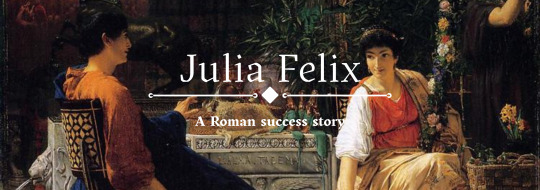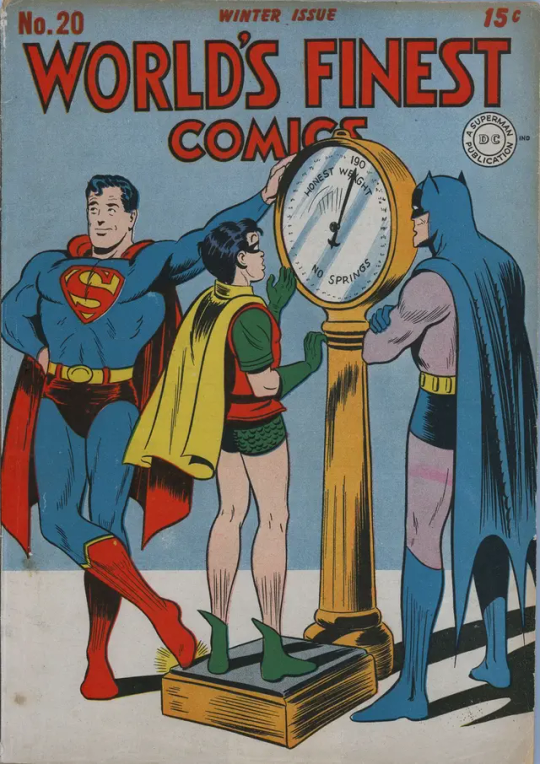#august 1952
Explore tagged Tumblr posts
Text

US Vogue August 15, 1952
Cherry Nelms wears a navy blue gabardine suit with a multi-pleated skirt and a small rounded jacket with a black velvet collar. By Ben Gaynes, in Miron wool gabardine. Faux pearl necklace, Richelieu.
Cherry Nelms porte un tailleur en gabardine bleu marine avec une jupe à plis multiples et une petite veste arrondie au col en velours noir. Par Ben Gaynes, en gabardine de laine Miron. Collier en fausses perles, Richelieu.
Photo Ted Croner vogue archive
#us vogue#august 1952#fashion 50s#fall/winter#automne/hiver#ben gaynes#miron wool#richelieu#cherry nelms#ted croner#vintage fashion#vintage vogue
43 notes
·
View notes
Text

Bill Randall - "Gay" - August 1955 Date Book Calendar Illustration - Kemper-Thomas Calendar Co. - American Pin-up Calendar Collection -
183 notes
·
View notes
Text










The Snows of Kilimanjaro (1952) dir. Henry King
#the snows of kilimanjaro#1952#henry king#leon shamroy#gregory peck#susan hayward#ava gardner#hildegard knef#1950s#screencaps#august 2024#3.5/5
20 notes
·
View notes
Text

#indochina war#guerre d'indochine#viet nam#na san#1952#légion étrangère#légion#légionnaire#foreign legion#soldier#war#50's#france#french#auguste apel#history
2 notes
·
View notes
Text
The Phantom Stranger first appeared in his own title, cover date aug/Sept 1952. He was created by John Broome and Carmine Infantino. ("The Haunters From Beyond!", "When Dead Men Walk", "Goblin in the Bottle", "The House of Strange Secrets", The Phantom Stranger 1#, DC Comic Event)

#nerds yearbook#real life event#first appearance#comic book#dc comics#comic#phantom stranger#august#september#1952#john broome#carmine infantino#paranormal
5 notes
·
View notes
Link
German mathematician and astronomer August Alle was born in 1837. He contributed to celestial mechanics, discovered new double stars and studied the solar system. His work was recognized by the Royal Astronomical Society.
Link: August Alle
0 notes
Text

0 notes
Photo

the restored version of this image They don't want you to see

Barred Spiral Galaxy NGC 2903
Credits: Almudena Alonso-Herrero, U. Hertfordshire, HST, ESA, NASA
#galaxies#my edits#aliens#silliness#the alien is from the Galaxy Science Fiction Magazine August 1952 cover
69 notes
·
View notes
Text

"Here’s what we know about Julia Felix: she lived in Pompeii from at least 62 CE. She was possibly illegitimate but was definitely not a member of the social and cultural elite. She worked for a living setting up and running a very interesting business and, by 79 CE, she had planned to shift her focus from managing a business to owning property. We know all these things because twentieth-century excavations at her business uncovered an advert, carved in stone and attached to the external wall of her huge building. It reads:
"To rent for the period of five years from the thirteenth day of next August to the thirteenth day of the sixth August, the Venus Bath fitted for the nogentium, shops with living quarters over the shops, apartments on the second floor located in the building of Julia Felix, daughter of Spurius. At the end of five years, the agreement is terminated."
This find illuminated the building it was attached to, bringing what otherwise looked like a very large anonymous domestic house into dazzling focus. With this description of the purpose of each room written by the owner herself, archaeologists and historians could see the site through a whole new lens and they realised that they had discovered a Roman entertainment space for the working middle classes. It is, so far, a completely unique find and it is magnificent. It offers us, as modern viewers, two amazing things: a little glimpse into the lives of the commercial classes of the Roman Empire who are so often completely and utterly invisible, and a brutal reminder that so much of what we ‘know’ about Roman women in the Roman world comes from rules concerning only the most elite.
We’ll do that second part first, because it’s the least fun. Roman written and legal sources are pretty universal in their agreement that although women could own property, they could not control it; they had no legal rights, could not make contracts and were to be treated as minors by the legal system for their entire lives. In order to buy or sell property women required a male guardian to oversee and sign off on any transactions. This is a basic truism of women in the Roman Empire, repeated ad nauseum by sources both ancient and modern including me, and it is undermined by Julia Felix’s rental notice.
The rental ad makes it pretty clear that Julia Felix is the owner-operator of a business complex including public baths, shops and apartments (there’s more too, as we’ll see), and she doesn’t seem to require anyone else to help her rent it out. She names her father – sort of; ‘Spurius’ might just mean that she is illegitimate – but this is effectively a surname, a personal identifier to differentiate her from other Julia Felixes in the area. It doesn’t mean her father was involved. Furthermore, the use of her father’s name as an identifier suggests that Julia didn’t have a husband and was either unmarried or widowed in 79 CE. The strong implication of her advert is that Julia Felix was an independent lady, a honey making money and a momma profiting dollars who could truthfully throw her hands up to Destiny’s Child.

We will never know if Julia escaped the flames and choking ash of 79 CE, fleeing as it swallowed her business and her home, but one discovery, made on 28 January 1952, suggests that she didn’t. The archaeologists, led by Amedeo Maiuri, uncovered on that day the skeleton of a woman who had fallen while running across the garden during the disaster. It’s clear this fallen woman was well off, because she was wearing a lot of gold jewellery. She carried four gold half-hoop earrings and wore four gold rings. Two of these rings were particularly expensive; both contained a red carnelian gem, one carved with a figure of Mercury, the other with an eagle. Around her neck she wore a necklace of gold filigree, dotted with ten pearls and hung with a green pendant. Someone stole both the necklace and earrings from the Pompeii Antiquarium in 1975 and no one, somehow, had ever bothered to photograph them so all we have are descriptions but the rings that survive are fine and expensive. The woman who wore them – was wearing them when she died – had real money to buy these objects and the woman who wore them did'nt leave Pompei in time.
Moreover, when she was found it was clear that at the moment of her death she was heading not towards the street or towards safety, but towards the shrine to Isis in the garden where all the most valuable possessions were kept. The valuable possessions that Julia Felix grafted for and maybe couldn’t bear to leave behind. There’s no way to tell whether this skeleton is Julia Felix, whether these bones once stood and looked at the plots of land Julia bought and made plans, or whether they belong to a looter or a chancer or someone just caught out. But it’s nice to pretend that Julia Felix, who shaped the city’s roads around her dream and offered respite and luxury to workers and made a tonne of money doing it, died and was buried with the place that still bears her name."
A Rome of One's Own: The Forgotten Women of the Roman Empire, Emma Southon
#julia felix#historyedit#history#women in history#ancient rome#pompei#businesswomen#italy#italian history#roman history#roman empire#1st century#historyblr#historical figures
735 notes
·
View notes
Text

Sylvia Plath, in a diary entry dated August 8th 1952 featured in The Unabridged Journals of Sylvia Plath
3K notes
·
View notes
Text

US Vogue August 15, 1952
A model in an evening gown of pale blue satin with a length of forest green toile tied like a glorified order ribbon. By Ceil Chapman, in Du Pont acetate.
Un modèle dans une robe du soir de satin bleu pâle avec une longueur de faille vert forêt nouée comme un ruban d'ordre glorifié. Par Ceil Chapman, en acétate Du Pont.
Photo Richard Rutledge vogue archive
#us vogue#august 1952#fashion 50s#fall/winter#automne/hiver#ready to wear#prêt à porter#ceil chapman#richard rutledge#vintage vogue#vintage fashion#DuPont
34 notes
·
View notes
Text

Earl Moran - "No Infringement" - August Girls of 1952 Calendar Illustration - Brown & Bigelow Calendar Co. - American Pin-up Calendar Collection
153 notes
·
View notes
Text


Marilyn Monroe and Ray Anthony at his party in Hollywood, August 1952.
#marilyn monroe#old hollywood#vintage#old hollywood glamour#history#beauty#1950s#retro#50s#photography#ray anthony
517 notes
·
View notes
Text




Cover artists: Jack Burnley - #20, 23 & 27 (both with Charles Paris); Win Mortimer - #54.
I love these early World's Finest Comics covers with Superman and Robin messing with each other (sometimes with an assist from Batman).
This was the period before Superman and Batman and Robin actually teamed-up inside the book, which was an anthology title, but they shared every single cover. The covers usually showed the three pals having fun playing baseball, or basketball, skiing, going to the swimming hole, or other activities boys liked to do.
Inside Superman and Batman (with Robin) had solo stories, along with whatever other characters were featured.
It wasn't until Superman (vol. 1 ) #76 (May, 1952) that Superman and Batman actually met in a comic book story, and accidentally learned each other's secret identity at the same time.
And they wouldn't begin teaming-up in World's Finest Comics for another two years, in #71 (July-August, 1954). As a cost saving measure, the book's page count was cut, along with the anthology format. The editors decided to put their most popular characters together in the one story there was room for, and a tradition was born. The Superman-Batman team-ups would, except for a short period around issue #200, be the format of the book until it was cancelled in 1986 with issue #323.
#World's Finest Comics#Superman#Batman#Robin#DC Comics#Golden Age comics#Jack Burnley#Charles Paris#Win Mortimer.
414 notes
·
View notes
Text
Writing Prompt: The First Lines
Choose one of the first lines of these literary works and either create a new poem/story, or continue rewriting the story...
Happy families are all alike; every unhappy family is unhappy in its own way. —Leo Tolstoy, Anna Karenina (1873)
If you really want to hear about it, the first thing you’ll probably want to know is where I was born, and what my lousy childhood was like, and how my parents were occupied and all before they had me, and all that David Copperfield kind of crap, but I don’t feel like going into it, if you want to know the truth. —J. D. Salinger, The Catcher in the Rye (1951)
In my younger and more vulnerable years, my father gave me some advice that I've been turning over in my mind ever since. —F. Scott Fitzgerald, The Great Gatsby (1925)
It was a bright cold day in April, and the clocks were striking thirteen. —George Orwell, Nineteen Eighty-Four (1949)
It was a pleasure to burn. —Ray Bradbury, Fahrenheit 451 (1953)
It was a queer, sultry summer, the summer they [electrocuted the Rosenbergs], and I didn’t know what I was doing in New York. —Sylvia Plath, The Bell Jar (1963)
I was born twice: first, as a baby girl, on a remarkably smogless [Detroit day of January 1960]; and then again, as a teenage boy, in an emergency room near [Petoskey, Michigan, in August of 1974.] —Jeffrey Eugenides, Middlesex (2002)
Mama died today. Or yesterday maybe, I don’t know. —Albert Camus, The Stranger (1942)
Many years later, as he faced the firing squad, [Colonel Aureliano Buendía] was to remember that distant afternoon when his father took him to discover ice. —Gabriel García Márquez, 100 Years of Solitude (1967)
"Where's Papa going with that ax?" —E. B. White, Charlotte's Web (1952)
If this writing prompt inspires you in any way, please tag me, or send me a link. I would love to read your work!
More: The Last Lines (pt. 1) ⚜ (pt. 2) More: Writing Prompts
#writing prompt#writing inspiration#writing exercise#spilled ink#dark academia#poetry#literature#writeblr#writers on tumblr#poets on tumblr#creative writing#writing prompts#light academia#quotes#lit#booklr#books#bookblr#writing reference#writing ideas#writing inspo#writing resources#leo tolstoy#jd salinger#f scott fitzgerald#george orwell#ray bradbury#sylvia plath#jeffrey eugenides#albert camus
243 notes
·
View notes
Photo
Born near Odessa on the Crimean peninsula, Soter August Jaxa-Małachowski (1867-1952) was closely linked with Kraków for many years. His maritime landscapes are still commonly found in many of the city’s apartments. Sadly, after the Second World War the artist was largely forgotten. It is only recently that his works are making a return to the public consciousness, thanks to retrospective exhibitions and critics’ reviews. The exhibition Soter Jaxa-Małachowski. On the 150th Anniversary of the Artist’s Birthday at the Krzysztofory Palace presents distinctive Baltic landscapes and other examples of his extensive body of work, such as landscapes of Kraków, the Tatra Mountains, rural Poland, the Italian and Dalmatian coast and Venice. Around a century ago he used to be described as a “pedigree landscape painter” by critics captivated by his technique and sensitivity to natural beauty. (dd) -October 6, 2017 ~ January 7, 2018. The Krzysztofory Palace, Rynek Główny 35.

Soter Jaxa-Małachowski, “Polskie morze” / Сотер Малаховский, “Польское море“
9 notes
·
View notes